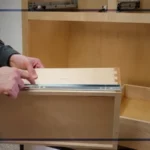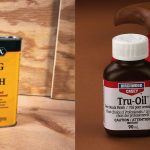Can You Put Polyurethane Over Latex Paint? A Complete Guide
Latex paint is a popular choice for both indoor and outdoor surfaces due to its ease of use, fast drying time, and low odor. However, it may not be strong enough to withstand moisture or wear and tear.
In contrast, Polyurethane is a clear protective coating that can be applied over wood, plastic and metal surfaces. This coating is well-known for creating a durable, shiny, and transparent finish that improves the look and safety of your wooden furniture.
But the question is, can you use polyurethane over latex paint? Yes, you can. Polyurethane is compatible with latex paint and can be applied as a protective topcoat. However, it is important to properly prepare the surface by ensuring it is clean, dry, and free from dirt and grease.
In this article, we will discuss the benefits and drawbacks of using polyurethane as a topcoat over latex paint. We will also provide you with some essential tips to achieve successful results.
Can You Put Polyurethane Over Latex Paint?
You can, without a doubt. Polyurethane not only provides the surface with an extra layer of protection and sturdiness, but it can also give the underlying paint an opulent glossy appearance.
By applying a layer of polyurethane over your latex paint, you can create a barrier that is highly resistant to scratches, chipping, and other types of wear and tear.
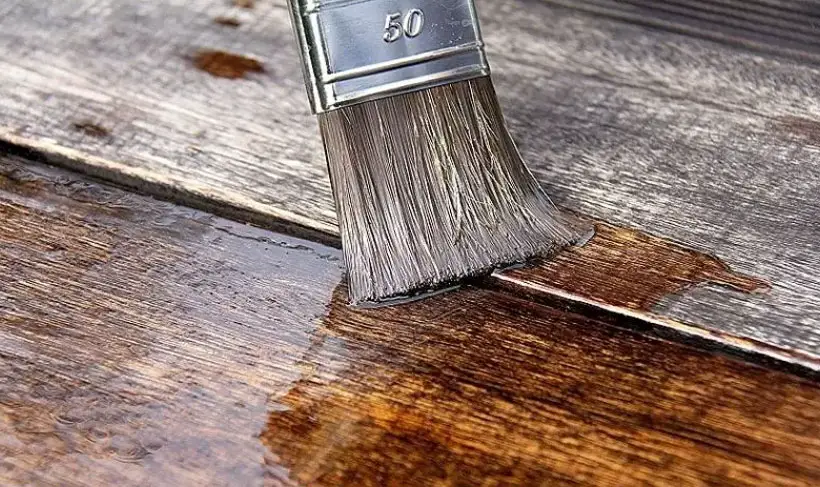
It is a versatile material with a wide range of uses, including rigid and flexible foams, coatings, adhesives, and electrical potting compounds. It can also be used in fibers such as spandex and polyurethane laminate.
But before using polyurethane, your latex paint needs to be completely dry. If it hasn’t, gases or moisture from the paint may cause the polyurethane to bubble or peel off. You should wait at least 25 to 30 days after painting before applying polyurethane, according to experts.
Complete Instructions On How To Apply Polyurethane Over Latex Point

Read the instructions we have provided below to learn how to apply a layer of polyurethane over a latex-painted surface.
Step 1: Clean the surface
Thoroughly clean the surface to remove any dirt, dust, grease or contaminants that could affect adhesion.
Step 2: Use a sandpaper to sand the surface
Then, lightly sand the surface to create a rough texture that will help the polyurethane adhere better.
Step 3: Wipe away the dust
Next, take a clean towel and wipe away any dust or debris left from the sanding.
Step 4: Stir the Polyurethane mixture
Once you are ready to apply polyurethane, it is crucial to stir it well to ensure an even application. If you have opted for oil-based polyurethane, you can add some mineral spirits to it to dilute the mixture.
Step 5: Brush a thin coat of Polyurethane over the surface
Next, take a synthetic or natural-bristle brush and dip your brush into the polyurethane and apply a thin coat in the direction of the grain. Be sure to smooth out any drips or excess polyurethane.
Step 6: Let the first coat of Polyurethane dry
You must now wait for the first coat to dry completely. If you have opted for water-based polyurethane, you can expect it to dry within 2-3 hours. However, if you are using oil-based polyurethane, it will take significantly longer to dry.
Step 7: Sand the surface again
After the first coat is dry, lightly sand the surface with a fine-grit sandpaper.
Step 8: Remove the dust left from sanding
Then, use a cloth to remove any dust or debris left from the sanding.
Step 9: Brush a second layer of Polyurethane
Next, you must apply a second coat of polyurethane in the same way as the first.
Step 10: Let it dry
You must leave the second coat to dry for at least 12 to 24 hours.
Step 11: To remove bumps sand the surface
If you desire a smoother finish, lightly sand between coats with a fine grit sandpaper to remove any bumps.
Step 12: Repeat the steps at least a few times
Lastly, you can repeat this process until you get the shine and protection you are looking for.
Factors You Should Remember Before Applying Polyurethane Over Latex Paint
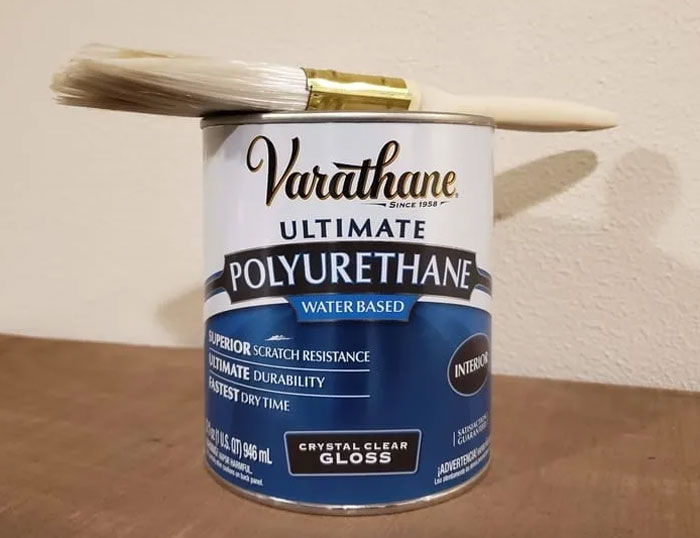
You should bear in mind a few key points before applying polyurethane over latex paint.
Make sure the latex paint is completely cured
It is essential to give the latex paint enough time to cure if you are going to apply polyurethane. It is typically advised to wait at least 30 days after painting before applying polyurethane.
Apply multiple coats of polyurethane
If you want to ensure a smooth and durable protective layer when applying polyurethane, it is best to use multiple thin coats rather than a single, thick coat. It is important to allow each coat to dry completely before applying the next one to prevent issues like bubbling or streaking.
Avoid humid conditions
You should apply polyurethane during low-humidity circumstances because high humidity can interfere with the drying and curing of the substance.
Choose a clear polyurethane
It is crucial that you select a clear polyurethane to avoid discoloration or staining the base paint.
Try to avoid high-traffic areas
Keep in mind that polyurethane can make a surface slippery, so it may not be ideal for areas with high foot traffic.
What Are The Different Types Of Polyurethane Available In The Market?
Polyurethane is a type of polymer made up of organic units connected by carbamate links. In 1937, Professor Otto Bayer achieved the first-ever effective polyurethane synthesis while researching in Germany.
Did you know that there are three primary types of polyurethane used as a polish? The following is a list of three different types of polyurethane:
Water-based polyurethane
The water-based polyurethane is a popular choice due to its ease of use, low odor, and low toxicity. It dries quickly and can be easily cleaned up with water, making it a more eco-friendly option.
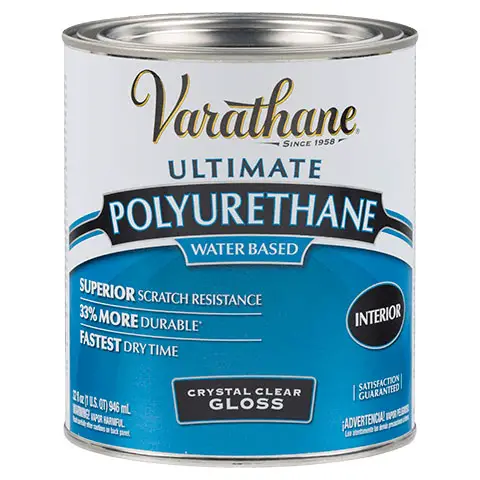
Oil-based polyurethane
The oil-based polyurethane is a more traditional version of polyurethane that takes longer to dry but produces a thicker and more durable finish. In addition, it gives the surface a more preferred amber tint.

Solvent-based polyurethane
It is a fast-drying and durable finish, but it is not as widely used as the other two due to its high toxicity level and dependence on solvents.
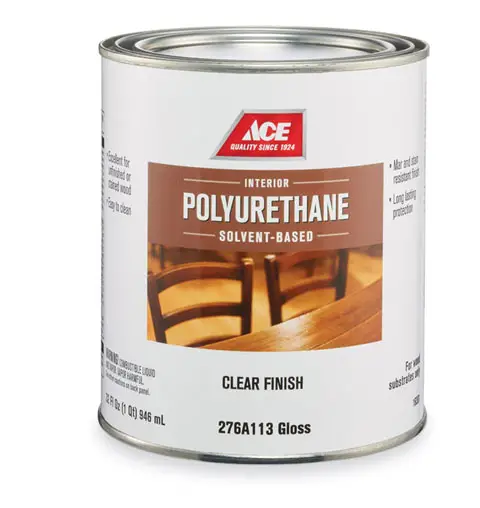
Applying Polyurethane Over Latex Paint: Common Issues And Solutions
When coating a latex-painted surface with polyurethane, you could run into a few problems.
Check out the table below for a list of typical problems that can happen when applying polyurethane over a latex-painted surface, as well as advice on how to prevent them:
| Common Issues | How to Avoid Them |
|---|---|
| Bubbling or blistering | Avoid vigorously stirring the polyurethane because doing so may cause air bubbles to form. |
| You should work in a ventilated area to allow trapped air or moisture to escape. | |
| Discoloration | If you want to reduce yellowing over time, pick a transparent polyurethane with UV inhibitors. |
| Do not place the polyurethane-coated surface under direct sunlight. | |
| Peeling | Use a high-quality polyurethane product and apply multiple thin coats for better adhesion. |
| Brush marks | You should use a foam brush or a spray gun for a smoother finish. |
| To minimize visible marks, apply thin, even layers of polyurethane while moving in a single direction. |
FAQs
Check out the FAQs below for more information on the application of polyurethane over latex paint.
Q: Do I need to use a primer before applying polyurethane over latex paint?
It is recommended to use a bonding primer specifically designed for adhesion between latex paint and polyurethane. This will help create a strong bond between the two.
Q: Can I use any type of polyurethane over latex paint?
It is best to use a water-based polyurethane over latex paint. Water-based polyurethanes are clear, have low odor, and offer good durability without yellowing over time.
Q: Can I apply polyurethane over old or damaged latex paint?
You should not apply polyurethane over old or damaged latex paint. You should apply polyurethane over a clean surface that is free from cracks, peeling, or flaking.
Q: Can I use oil-based polyurethane over latex paint?
You should avoid using oil-based polyurethane over a latex painted surface. This is because the oil-based polyurethane has a high level of solvent content, which can cause the latex paint to soften or dissolve. This will result in an uneven finish that can spoil the look of the surface.
Q: Can I use a spray gun to apply polyurethane over latex paint?
Yes, you can use a spray gun to apply polyurethane over latex paint, but it may be more difficult to control the amount of product being applied.
Q: How often should I reapply polyurethane over latex paint?
It depends on the level of wear and tear the surface is exposed to, but it’s generally recommended to reapply polyurethane every 2-3 years to maintain protection and durability.
Q: Can I apply polyurethane over matte or flat finish latex paint?
Yes, you can apply polyurethane over any type of latex paint, including matte or flat finish. However, you should remember that glossier paints will provide a smoother, more uniform finish.
Final Words
Coating a surface with polyurethane after painting with latex paint can offer a variety of advantages, such as additional protection and a lovely gloss.
If you decide to use water-based or oil-based polyurethane, be careful to thoroughly prepare the surface. You should lightly sand the surface and wait until the paint has completely dried before applying polyurethane. This will guarantee a successful and smooth application of polyurethane over latex paint.

